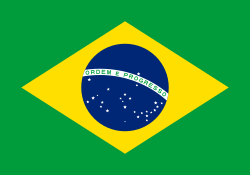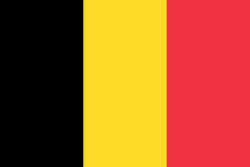Storbritanniens Grand Prix 1983
| Datum | Lördag 16 juli 1983 |
|---|---|
| Bana | Silverstone Circuit |
| Sträcka | 67 × 4,719 = 316,173 km |
| Vinnare | Alain Prost, Renault |
| Pole position | René Arnoux, Ferrari |
| Snabbaste varv | Alain Prost, Renault, 1:14,212 |
Storbritanniens Grand Prix 1983 var det nionde av 15 lopp ingående i formel 1-VM 1983.
Resultat
- Alain Prost, Renault, 9 poäng
- Nelson Piquet, Brabham-BMW, 6
- Patrick Tambay, Ferrari, 4
- Nigel Mansell, Lotus-Renault, 3
- René Arnoux, Ferrari, 2
- Niki Lauda, McLaren-Ford, 1
- Mauro Baldi, Alfa Romeo
- Andrea de Cesaris, Alfa Romeo
- John Watson, McLaren-Ford
- Jean-Pierre Jarier, Ligier-Ford
- Keke Rosberg, Williams-Ford
- Jacques Laffite, Williams-Ford
- Michele Alboreto, Tyrrell-Ford
- Danny Sullivan, Tyrrell-Ford
- Thierry Boutsen, Arrows-Ford
- Roberto Guerrero, Theodore-Ford
- Marc Surer, Arrows-Ford
Förare som bröt loppet
- Manfred Winkelhock, ATS-BMW (varv 49, motor)
- Raul Boesel, Ligier-Ford (48, upphängning)
- Piercarlo Ghinzani, Osella-Alfa Romeo (46, bränslesystem)
- Derek Warwick, Toleman-Hart (27, växellåda)
- Riccardo Patrese, Brabham-BMW (9, turbo)
- Stefan "Lill-Lövis" Johansson, Spirit-Honda (5, bränslesystem)
- Eddie Cheever, Renault (3, motor)
- Bruno Giacomelli, Toleman-Hart (3, turbo)
- Elio de Angelis, Lotus-Renault (1, turbo)
Förare som ej kvalificerade sig
- Johnny Cecotto, Theodore-Ford
- Corrado Fabi, Osella-Alfa Romeo
- Kenny Acheson, RAM-Ford
Noteringar
- Spirit Racing gjorde F1-debut.
- Kenny Acheson gjorde F1-debut.
VM-ställning
Förarmästerskapet
| Konstruktörsmästerskapet
|
| ||||||||
| |||||
Media som används på denna webbplats
The civil ensign and flag of Belgium. It is identical to Image:Flag of Belgium.svg except that it has a 2:3 ratio, instead of 13:15.
The Flag of Europe is the flag and emblem of the European Union (EU) and Council of Europe (CoE). It consists of a circle of 12 golden (yellow) stars on a blue background. It was created in 1955 by the CoE and adopted by the EU, then the European Communities, in the 1980s.
The CoE and EU are distinct in membership and nature. The CoE is a 47-member international organisation dealing with human rights and rule of law, while the EU is a quasi-federal union of 27 states focused on economic integration and political cooperation. Today, the flag is mostly associated with the latter.
It was the intention of the CoE that the flag should come to represent Europe as a whole, and since its adoption the membership of the CoE covers nearly the entire continent. This is why the EU adopted the same flag. The flag has been used to represent Europe in sporting events and as a pro-democracy banner outside the Union.Flag of South Africa, used between 1928 and 1982. It is identical to the 1982 to 1994 version except that the shade of blue is darker. It is also known as the "Oranje-Blanje-Blou".
Flag of South Africa, used between 1928 and 1982. It is identical to the 1982 to 1994 version except that the shade of blue is darker. It is also known as the "Oranje-Blanje-Blou".













